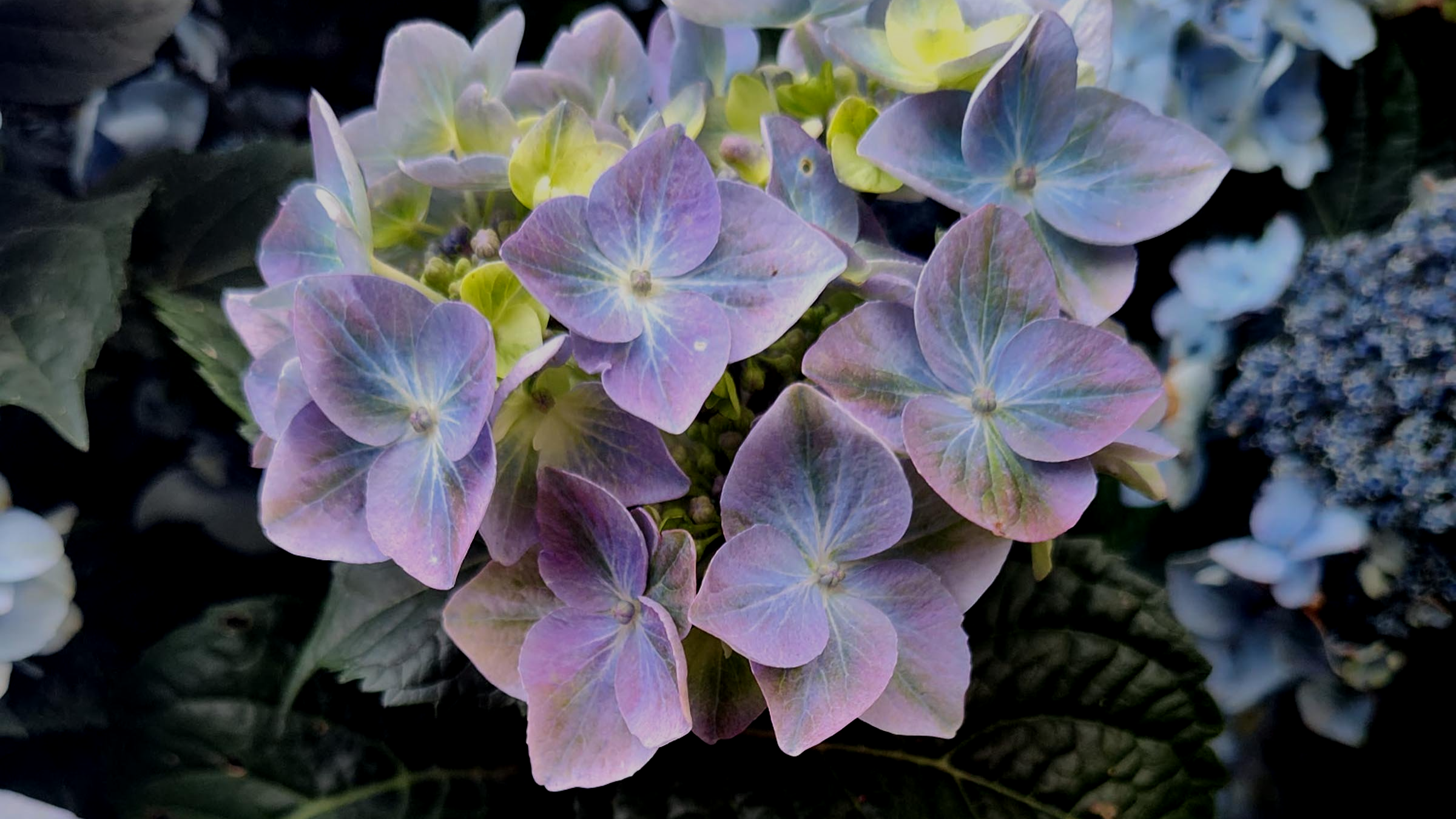Fuchsias! What does that name conger up for you? When I usually think of fuchsias, I visualize a beautiful hanging basket dripping with delicately formed blossoms of pinks, reds, purples and whites. When I purchased my nursery in 1989, fuchsias baskets were very much in their heyday and we grew hundreds of them. But over the years interest has waned, probably in part due to their high maintenance nature. Now, the trend is toward hardy fuchsias that can be planted in the ground and treated like any other shade-loving perennial.
There are literally hundreds of varieties of fuchsias that are hardy in our northwest gardens. By hardy I mean that with minimal protection they will go dormant in the winter and regrow the following spring just like your hostas, asters and daisies do year after year after year. And what is so great about hardy fuchsias is that unlike most perennials that only bloom for 5 to 6 weeks, once fuchsias start blooming, they will continue until frost in late October - they are a blooming machine!
Hardy fuchsias look just like their trailing cousins, only usually the flowers are smaller and the plants form small bushes that only grow 2 to 3 feet tall and as wide. The color range is not quite as exotic as the basket forms, but there is still a good selection of varieties to chose from. I personally prefer the smaller and dainty flowers of the hardy varieties; they remind me of some of my wife’s earrings.
Like basket varieties, upright hardy fuchsias prefer a lightly shaded area - too much shade or too much sun will result in poor performance. Evenly moist soil is essential and moderate fertilizing is beneficial. Since flowers come on the new growth (like a rose), some light pruning during the season will continue to stimulate new growth. Removing spent flowers and seed pods will also prolong the bloom season. Hardy fuchsias are a perfect addition to a shade bed or container, and they combine well with Astilbe, Hosta, ferns or just about any plants that thrives in some filtered shade. I have several planted in my shade beds and even some in sunnier areas where, with adequate water, they seem to do just fine.
At the end of the season, I will cut them halfway back to the ground and then in March or April, after I see what is starting to grow, I will cut off the rest of last year’s growth. After adding a little fertilizer and mulch, I’m ready for another season of non-stop blooms from these easy-to-grow plants.
Late June and early July is the perfect time to shop for hardy fuchsias. The nursery is well stocked right now with a wide variety of flavors in full bloom, (at last count I saw about two dozen different varieties on our benches) so you can see firsthand what the flowers really look like. If you follow good horticultural practices, you should have 100% success transplanting them and in just a few short years your fuchsia will be 3 times the size it is at planting.
If you have a shady bed that needs a pop of color to compliment the ferns, hostas, astilbes and such, then plunk in a few hardy fuchsias. You won’t be sorry and the hummingbirds will thank you as well. Stay safe keep on gardening!



